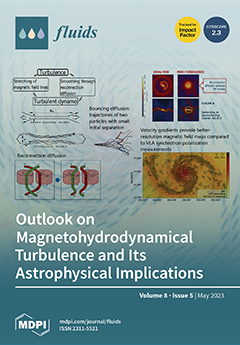Due to its low global warming potential (GWP) and good environmental properties, CF
3I can be a suitable component of refrigerant mixtures in the field of refrigeration and air conditioning. In this work, the local condensation heat transfer characteristics of CF
3
[...] Read more.
Due to its low global warming potential (GWP) and good environmental properties, CF
3I can be a suitable component of refrigerant mixtures in the field of refrigeration and air conditioning. In this work, the local condensation heat transfer characteristics of CF
3I were experimentally investigated in a plate heat exchanger (PHE). The condensation heat transfer experiments were carried out under conditions of vapor qualities from 1.0 to 0.0, at saturation temperatures of 25–30 °C, mass fluxes of 20–50 kg/m
2s, and heat fluxes of 10.4–13.7 kW/m
2. Local heat transfer coefficients were found to vary in both the horizontal and vertical directions of the plate heat exchanger showing similar trends in all mass fluxes. In addition, the characteristics of local heat flux and wall temperature distribution as a function of distance from the inlet to the outlet of the refrigerant channel were explored in detail. The comparison of the experimental data of CF
3I with that of R1234yf in the same test facility showed that the heat transfer coefficients of CF
3I were comparable to R1234yf at a low vapor quality and a mass flux of 20 kg/m
2s. However, R1234yf exhibited a transfer coefficient about 1.5 times higher at all vapor qualities and a mass flux of 50 kg/m
2s. The newly developed correlation predicts well the experimentally obtained data for both CF
3I and R1234yf within ±30%.
Full article





